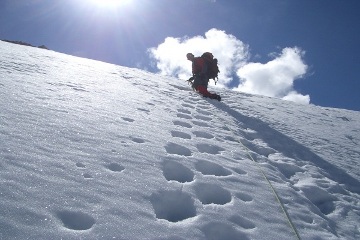High mountains are nature’s most elegant objectives. Getting to the summits of these peaks requires experience, skill, physical strength, and mental fortitude.
Basic skills
Mountaineering draws on the full range of outdoor skills, from hiking and camping to climbing and glacier travel. The best way to get started is to master the most basic skills first. Three foundational areas stand out:
